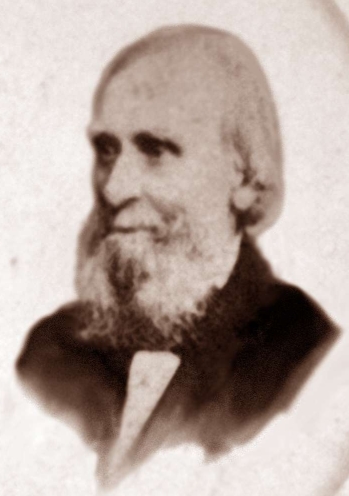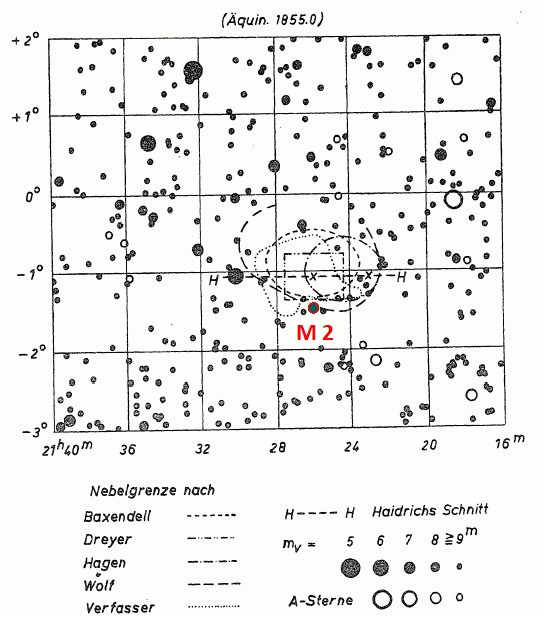
 |
Baxendell was born April 19, 1815 at Bank Top, Manchaster, UK. He was led to astronomy by his mother. After various voyages to Central and South America (watching the Leonids in 1833) he settled in Manchester where he could use the instruments of Robert Worthington, who has erected the Crumpsall Observatory (with 13" and 5" refractors). He was fascinated by observing variable stars (first report: Jan. 1, 1837 on alpha Orionis) and discovered a total of 18 new variables. In 1857 he was elected a Fellow of the Royal Astronomical Society and 1959 appointed Astronomer to the Corporation of Manchester. In 1865 he married Mary Anne, sister of well known Astronomer Royal Norman Pogson (also a variable star specialist). In his later years Baxendell resided at Southport, where he was appointed superintendent of an observatory in Hesketh Park, fitted up by John Fernley. In 1871 he erected his own private observatory in Birkdale, Southport, and resumed his variable star research with a 6" refractor, made by Thomas Cook & Sons, assisted for some years by his son Joseph. He published several papers on variable stars, planets, comets, meteors and the sun (he first noticed the "green flash" at sunset). He died at Birkdale on Oct. 7, 1887 at the age of 72.
Obituary: Obs. 10, 399 (1887); MNRAS 48, 157 (1888); Proc. Roy. Soc. 43, IV (1888); AN 118, 175 (1887)
Baxendell has contributed only one object to the NGC. He published the discovery of a large faint nebula near the Globular Cluster M 2 in Aquarius. He found the object, designated as NGC 7088 by Dreyer, on Sept. 28, 1880 at his private observatory in Birkdale, using the 6" refractor. He desrcibes it beeing of "irregular oval form, its longer axis lying in a nearly east and west direction". It is 30' north of M 2 and has a size of 75' x 52'. He writes "It seems to be similar in character to the large nebula near the Plejades [found by Tempel], but is slightly less bright. I have, however, seen it on several nights, and have no doubt of its existence." But, its existence is the very problem! NGC 7088 was seen visually by several observers (see fig. below), such as Dreyer (1885, 10" refractor), Bigourdan (1897, 12" refractor), Hagen (1915 and 1917, 16" refractor), Wolf (1927, 6" refractor), O'Connor (1929, 15" refractor), Becker (1930, 12" refractor) and Lehner (1930, 4" refractor). The crucial thing is that, apart from these sightings, the object could never be photographed (and got the nickname "Baxendell's Unphotographable Nebula"). Many attempts were made (Wolf, Baade, Shapley, Strohmeier, Gürtler), using different emulsions and filters, but the result was always negative. The modern conclusion is: The object is not real and all visual observations are due to physiological delusions, maybe caused by reflections of the nearby bright cluster M 2. This is supported by sightings of O'Connor, reporting two other, and ever larger nebulae near M 2, which are nonexistent too! The same might be true for the obscure "Hagen clouds". NGC 7088 is included as "galactic nebula" Ced 193 in Cederblad's catalogue (1946).
| D | N | NI | Y | M | D | Ap | I | T | Name | Con | Type | S | Author | Title | Source |
| 1 | N | 7088 | 1880 | 9 | 28 | 6,0 | Rr | v | Baxendell's Nebula | AQR | NF | 10 | Baxendell, J. | A New Nebula | MNRAS 41, 48 (1880) |
 |
NGC 7088 according to different observers (Strohmeier, Gürtler: Veröff. Sternw. München, Bd. 4, Nr. 8, 1951)